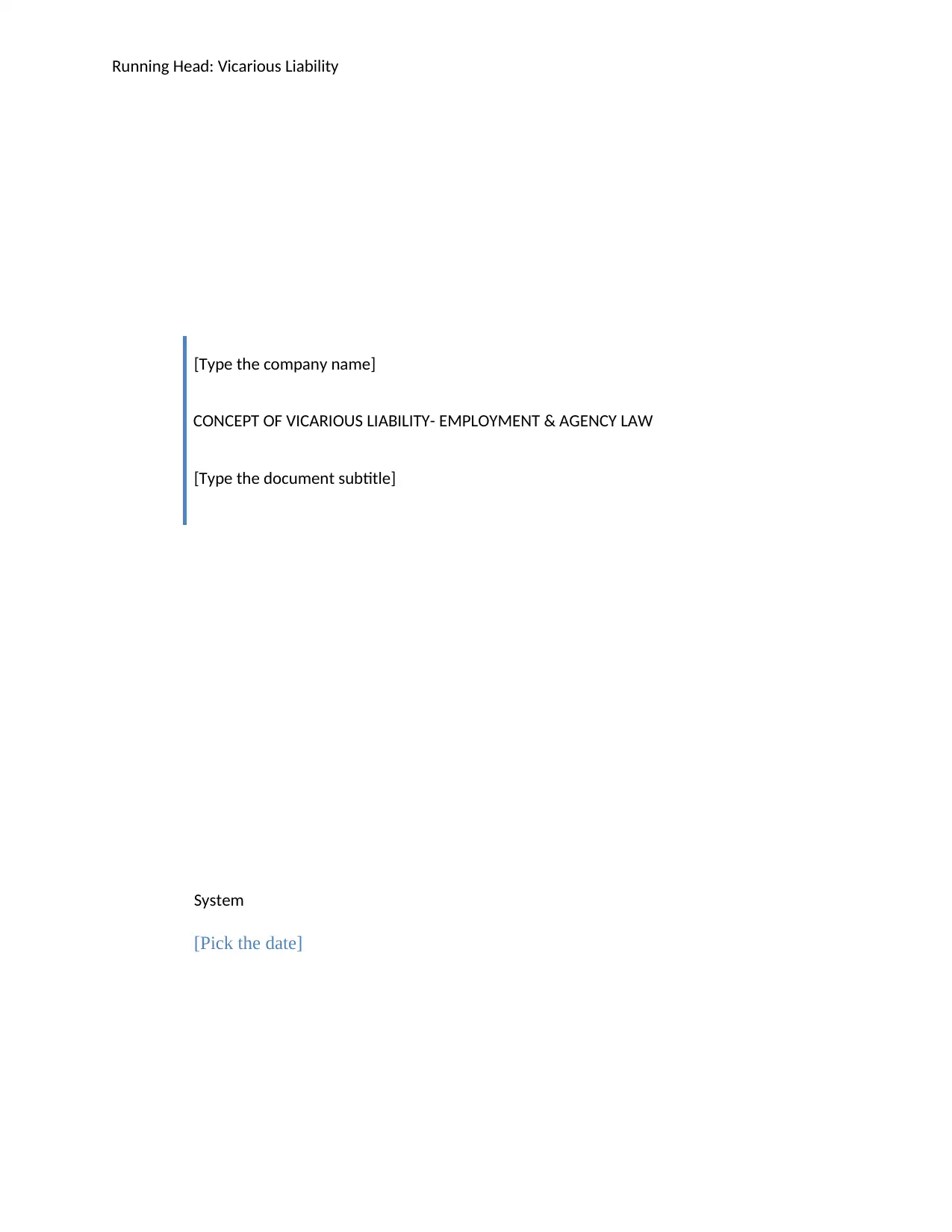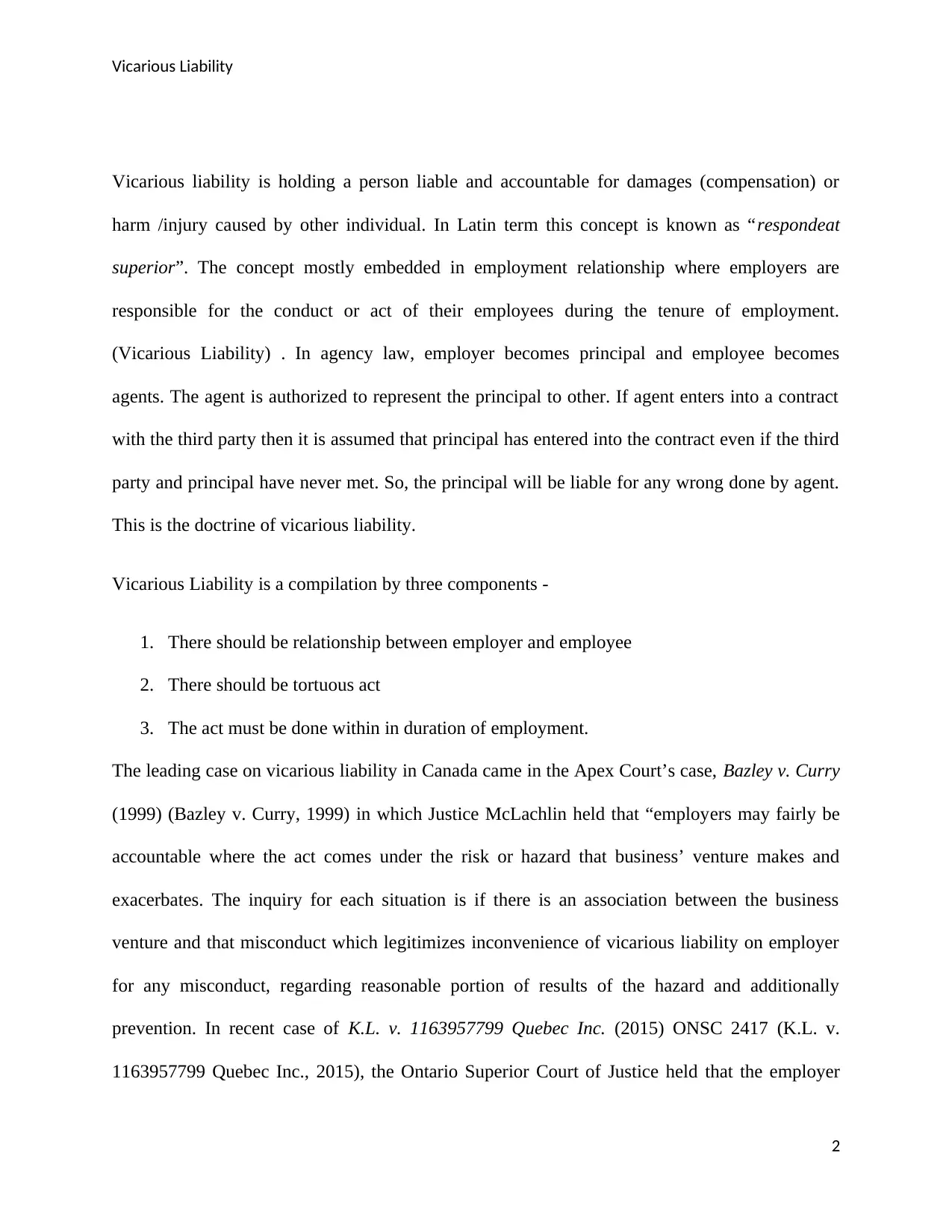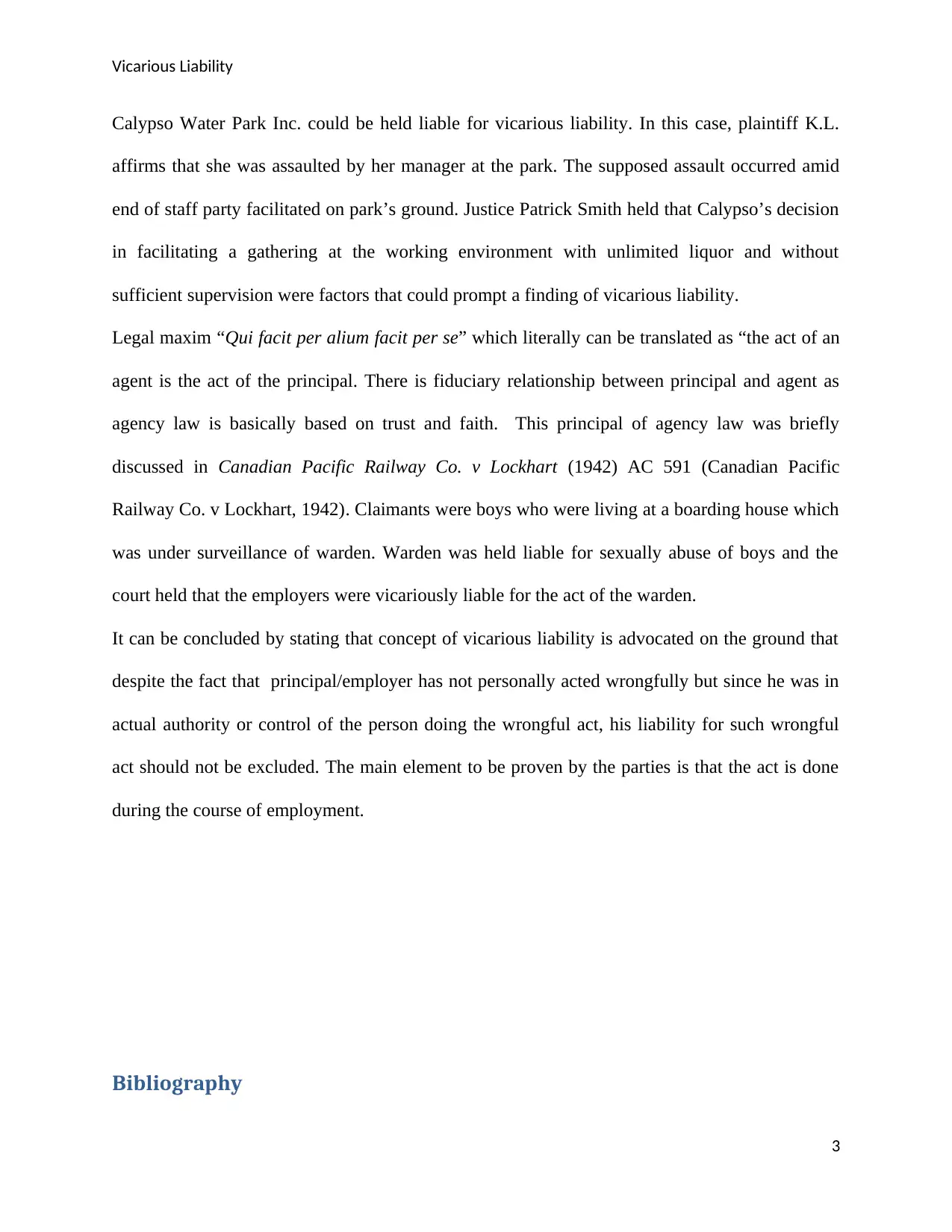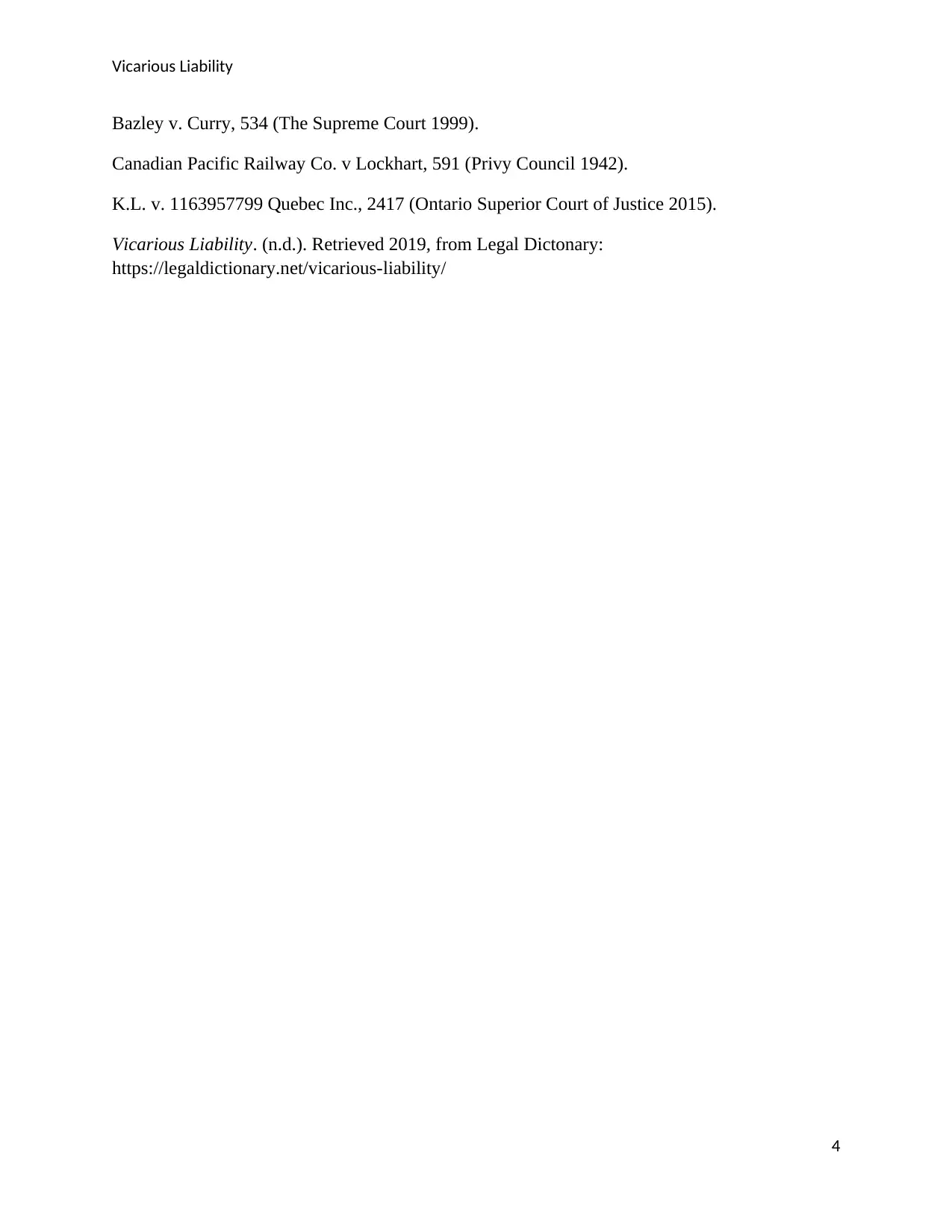Vicarious Liability: Analysis of Employment and Agency Law Concepts
VerifiedAdded on 2023/04/23
|4
|699
|476
Essay
AI Summary
This essay provides an in-depth analysis of vicarious liability, a crucial concept in employment and agency law. It begins by defining vicarious liability as holding a person accountable for damages caused by another, often in an employment context where employers are responsible for their employees' actions. The essay explores the 'respondeat superior' principle, highlighting the three key components: the existence of an employer-employee relationship, a tortious act, and the act occurring within the scope of employment. It then examines the leading Canadian case of Bazley v. Curry, which established employer accountability for risks associated with their business ventures. The essay also references the K.L. v. 1163957799 Quebec Inc. case, illustrating how employers can be held vicariously liable for actions at company-sponsored events. Furthermore, it discusses the legal maxim "Qui facit per alium facit per se," emphasizing the fiduciary relationship between principals and agents, as seen in Canadian Pacific Railway Co. v Lockhart. The essay concludes by underscoring that vicarious liability stems from the employer's authority or control over the wrongdoer, even if the employer did not personally commit the wrongful act. The essay is well-supported by citations and legal precedents.
1 out of 4








![[object Object]](/_next/static/media/star-bottom.7253800d.svg)